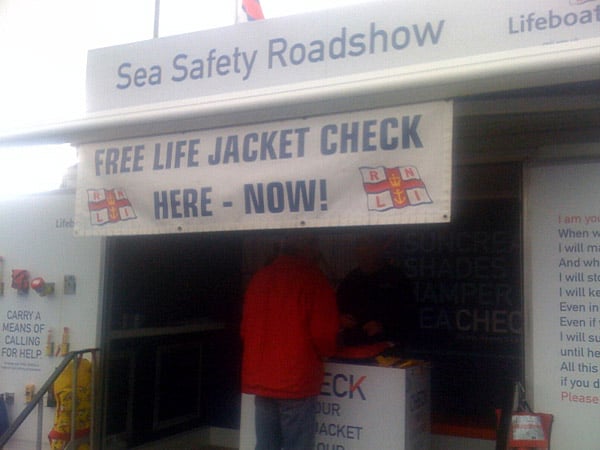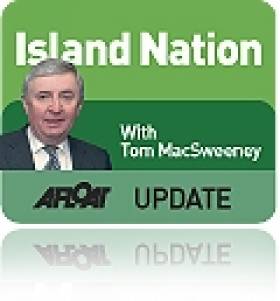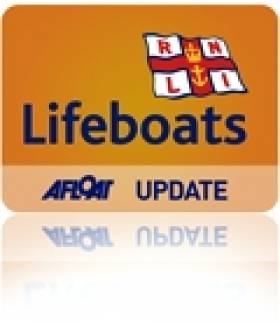Displaying items by tag: lifejackets
Lifejackets and Many Kinds of Racing
The wearing of jackets is not compulsory, but a decision for the individual sailor, though Skipper can insist that crews use them while racing.
In the United States a debate is underway as to whether the wearing of jackets at all times on racing boats should be made compulsory by law. Regulations here require that everyone on board any boat of seven metres or less, approximately 22 feet, must wear lifejackets. They must be carried aboard for everyone on any vessel regardless of size. Every child less than 16 years of age must wear a lifejacket or personal floatation device at all times on deck while the craft is underway.
As owners prepare boats for racing this season, these regulations should be kept in mind. Enforcing the law, or even effectively checking its application remains patchy. Introducing laws is easier than implementing them, particularly in a yacht racing situation. Sailing clubs have their own enforcement arrangements and insist on buoyancy aids for dinghy racing.
Safety on the water is an issue for each individual, but skippers/owners would be well advised to protect themselves in this litigious nation by insisting on the wearing of lifejackets by crew members during racing. Accidents will happen. Preparation is best.
The national sailing association, the ISA, is to nominate teams for this year's Nations Cup match racing. The finals will be held at the USA Sailing Centre in Wisconsin from September 13-18.
The Irish Sailing Association this week sought expressions of interest from skippers who would like to represent Ireland, in the first instance at the European Regional Finals in Gydnia, Poland, from July 19-23.
Ireland is drawn in Europe Group II in the open and women's classes. Expressions of interest are needed to the ISA by next Tuesday, February 8. Selection will be based on performance in the ISA Match Race Championships last year and ISAF ranking positions.
2-handed class" racing in this year's Dun Laoghaire Week in early July. A number of skippers have already expressed interest and there may be UK boats. He wants to know if any South Coast sailors are interested. Contact Olivier who is Sailing Manager at the National Yacht Club in Dun Laoghaire, phones 012801198 or 2805725 or by Email to Olivier at: [email protected]
Vinnie O'Shea of the RCYC has been elected Commodore of the South Coast Offshore Racing Association (SCORA). Jackie Kenefick of Schull Harbour SC is Executive Officer and Michael Murphy of both the Schull and Crosshaven clubs remains as Treasurer and PRO. The Association is to discuss class bands and handicapping.
This article is reprinted by permission of the EVENING ECHO newspaper, Cork, where Tom MacSweeney writes maritime columns twice weekly. Evening Echo website: www.eecho.ie
More on lifejackets
http://www.afloat.ie/safety/lifeboats/item/13619-majority-of-lifejackets-fail-lifeboat-test/
Two Investigations Underway into Weekend Boating Accident
Gardai launched a full investigation into the weekend boating tragedy where two men died in Inishboffin harbour.The men were identified locally as former Mayo footballer, Ger Feeney, and businessman, Donal McEllin, both from Castlebar.
It is understood the pair left the island by small RIB to travel back to their motor cruiser some time after midnight on Saturday and are both thought to have been wearing lifejackets when they set out.A second investigation is also to be carried out by officers of the Marine Casualty Investigation Board (MCIB).
More here:
Ex-GAA star dies in double drowning tragedy off island
Two men drowned off Inishbofin
Castlebar in shock as Inishbofin victims are named
Related Safety posts
RNLI Lifeboats in Ireland
Safety News
Rescue News from RNLI Lifeboats in Ireland
Coast Guard News from Ireland
Water Safety News from Ireland
Marine Casualty Investigation Board News
Marine Warnings
Two Men Die in Inishbofin Boating Accident
Two men died in a boating accident off the coast of Inishbofin in Co. Galway early this morning.
The pair, aged in their late 50's and early 60's had arrived on the island yesterday on a 40ft motor cruiser and it is understood, through local lifeboat sources, the accident appears to have happened as the two men returned to the cruiser by dinghy on Saturday night.
Both men were wearing lifejackets.
One of the bodies was washed ashore, while another was located inside the upturned dinghy around 11 o'clock this morning.
The bodies were airlifted by the Sligo-based Coastguard helicopter to Galway University Hospital.
Post-mortem examinations will be carried out to determine the exact cause of death.
Free Lifejacket Check in Dun Laoghaire Today
With the summer boating season coming to a close, the RNLI’s Sea Safety team is back in Dun Laoghaire this morning and people who use the water are being invited to get their lifejackets checked out for free and find out more about this vital piece of boating kit.
It's an ideal opportunity to get the jackets checked before putting them away for the winter or indeed before the start of the different winter series on the Bay.
The RNLI carried out a similar service during the summer and on that occasion Over 90% of lifejackets tested at Ireland's two biggest sailing centres failed the simple checks.
From 91 jackets tested in Cork and Dublin, 83 failed the free inspection.
The annual Lifejacket check service carried out by the institute was only taken up by 40 sailors from an estimated 1,000 competing crews at Cork week. 35 failed the test.
The RNLI lifejacket clinic took place yesterday at Dun Laoghaire marina and takes place again today.
The RNLI’s lifejacket campaign, first launched in June 2007, aims to encourage all who go to sea in their leisure time to always put their lifejackets on when going to sea, and then decide when (if at all) to take it off.

RNLI Divisional Sea Safety Manager, Nicola Davies, explains:
‘A lifejacket is useless unless worn, if it is worn incorrectly or if it is not in full working order. It’s much safer to get into the habit of wearing a lifejacket at all times when afloat, because it means you’ll be familiar with your particular lifejacket and how to operate it should an emergency situation unfold. In the summer months when boat owners may take family and friends who don’t often go afloat, it’s even more crucial to ensure that all on board, including babies and children, are wearing a well-fitted lifejacket.
‘A correctly fitting lifejacket will keep you afloat so that, should you end up in the water, you have time to overcome the initial shock and you can begin to think about survival. It will also keep your airways clear of the water, which is absolutely crucial because it only takes just a cup full of water in the lungs to make survival difficult and just over a litre to drown. A lifejacket also buys you time, this will allow for the search and rescue services to come to your aid. Our advice is not meant to spoil the fun of water users, but it is founded on the years of experience of RNLI lifeboat crew who know how unpredictable the weather can be and how quickly things can go wrong at sea.’
Lifejackets should not only be worn, but they need regular maintenance checks too. They should be stored in a dry, well-aired area when not in use. RNLI Sea Safety managers and volunteers around the coast of the UK and Ireland found that almost 35 per cent of lifejackets they’ve looked at during RNLI Sea Checks would, in their opinion, fail to operate.
Related Safety posts
RNLI Lifeboats in Ireland
Safety News
Rescue News from RNLI Lifeboats in Ireland
Coast Guard News from Ireland
Water Safety News from Ireland
Marine Casualty Investigation Board News
Marine Warnings
Safety Campaign Urges Three Steps to Drowning Prevention
1. SWIM WHERE LIFEGUARDS PATROL - they're trained to keep you safe
Warm summer trips to Ireland's waterways can be an accident waiting to happen if the proper precautions are not taken. One of the safest precautions people can take is to swim at Lifeguarded waterways. Irish Water Safety trained Lifeguards patrol beaches and inland waterways nationwide. Lifeguards are trained to see the dangers develop, can prevent accidents before they happen and respond instantly if they occur. Every year Lifeguards not only carry out all sorts of dramatic rescues but also give on-the-spot advice to keep swimmers. This umbrella of protection is available at Lifeguarded waterways, all of which are listed on Irish Water Safety's website, www.iws.ie.
2. CHECK YOUR LIFEJACKET - it may save your life.
If you have anything to do with boats and being on or near the water, having a lifejacket and wearing it isn't enough - you also have to check that it works. Wearing a lifejacket will only save your life if you know it works so get it checked. That's the pressing message of a Bank Holiday campaign from Irish Water Safety, which is urging people taking to water-based activities to make sure that their lifejackets and buoyancy aids are fully working as they check their equipment ready for the summer season ahead.
Irish Water Safety is concerned about a noticeable increase in the number of people who use Ireland's waterways without wearing proper protective equipment and recommends that all leisure boating enthusiasts wear a lifejacket that is maintained, correctly worn and fit for purpose. More people than ever before are coming into contact with our extensive network of waterways yet tragically there have been a number of drownings this year where the absence of a lifejacket was a contributory cause.
Irish Water Safety has developed a 14-Steps to Safe Boating Guide to educate water users on the dangers that are ever present when boating. SEE BELOW.
3. DROWNING IS FAST AND SILENT - supervise children on holidays.
When the sun is shining and the weather warmer, there's nothing more refreshing than a dip however it is never safe to assume that children will not be injured and this is why water safety must start the moment you arrive at a holiday destination. The swiftness of an accident and its possible outcome is devastating. In the few seconds it takes to turn burgers on the barbecue or dash inside for more cold drinks, a child can drown. The general misconception is that there will be splashing and shouting so parents can come to the rescue. Sadly, this isn't the case. Drowning is fast and silent, which is why many parents don't even know its happening.
Holiday destinations often lull people into a false sense of security and people often put their lives at risk around water as a result of complacency, ignorance of the dangers, a lack of training or a combination of all three. Irish Water Safety has produced the following 14 Steps to safe holidays.
BELOW: Safe Holidays Guide / Safe Boating Guide / Lifejackets Checklist
Irish Water Safety's 14-Steps to Safe Holidays
On arrival at a holiday centre, which has a swimming pool, do not allow children to go immediately to the pool until you have checked out the safety arrangements. On many occasions there may not be any lifeguard on duty.
Swim only after digesting food and never after taking alcohol or immediately after a long journey.
Always swim with others, never alone.
Be particularly careful of young children wandering off. Constantly supervise children/baby pools that may be next to the main pool without any barrier between them.
Check for pool depth markings. There may not be any so you must check the depths yourself if you are a competent swimmer.
Ensure that you do not dive into shallow water.
Watch out for sudden drops or changes in the gradient of a pool floor.
Check for missing, uneven or slippery tiles surrounding or in the pool.
Do not swim or do not allow children to swim in a pool with discoloured water.
Always swim in designated areas patrolled by lifeguards.
Swim with family or friends - never alone.
Swim within your depth and parallel to the shore.
Never swim after dark.
Beware of rip currents, as new moon spring tides are particularly high mid week.
Irish Water Safety's 14 steps to safe and enjoyable boating:
Check condition of boat and equipment, hull, engine, fuel, tools, torch.
Check the weather forecast for the area.
Check locally concerning dangerous currents, strong tides etc.
Do not drink alcohol while setting out or during your trip.
Carry an alternative means of propulsion e.g. sails and oars or motor and oars.
Carry a first aid kit on board and distress signals (at least two parachute distress rockets, two red hand flares).
Carry a fire extinguisher, a hand bailer or bucket with lanyard and an anchor with rope attached.
Carry marine radio or some means of communication with shore.
Do not overload the boat - this will make it unstable.
Do not set out unless accompanied by an experienced person.
Leave details of your planned trip with someone ashore - including departure and arrival times, description of boat, names of persons on board, etc.
Wear a Lifejacket or Buoyancy Aid at all times.
Keep an eye on the weather - seek shelter in good time.
In Marine Emergencies, call 999 or 112 and ask for Marine Rescue.
Lifejackets Checklist
Ensure CO2 Cartridges have not been punctured and are secured firmly
Ensure all zips, buckles, fasteners and webbing straps are functioning correctly and adjusted to fit the user
Check that their lights, if fitted are operating correctly
Ensure that Automatic Inflation devices if fitted are fully serviced and in date
Check that the valve or lifejacket is not leaking by inflating the lifejacket overnight
Discard any faulty lifejackets by destroying them
Always wear a crotch strop on your lifejacket
For information on buoyancy aids and lifejackets click on the IWS website www.iws.ie.

































































